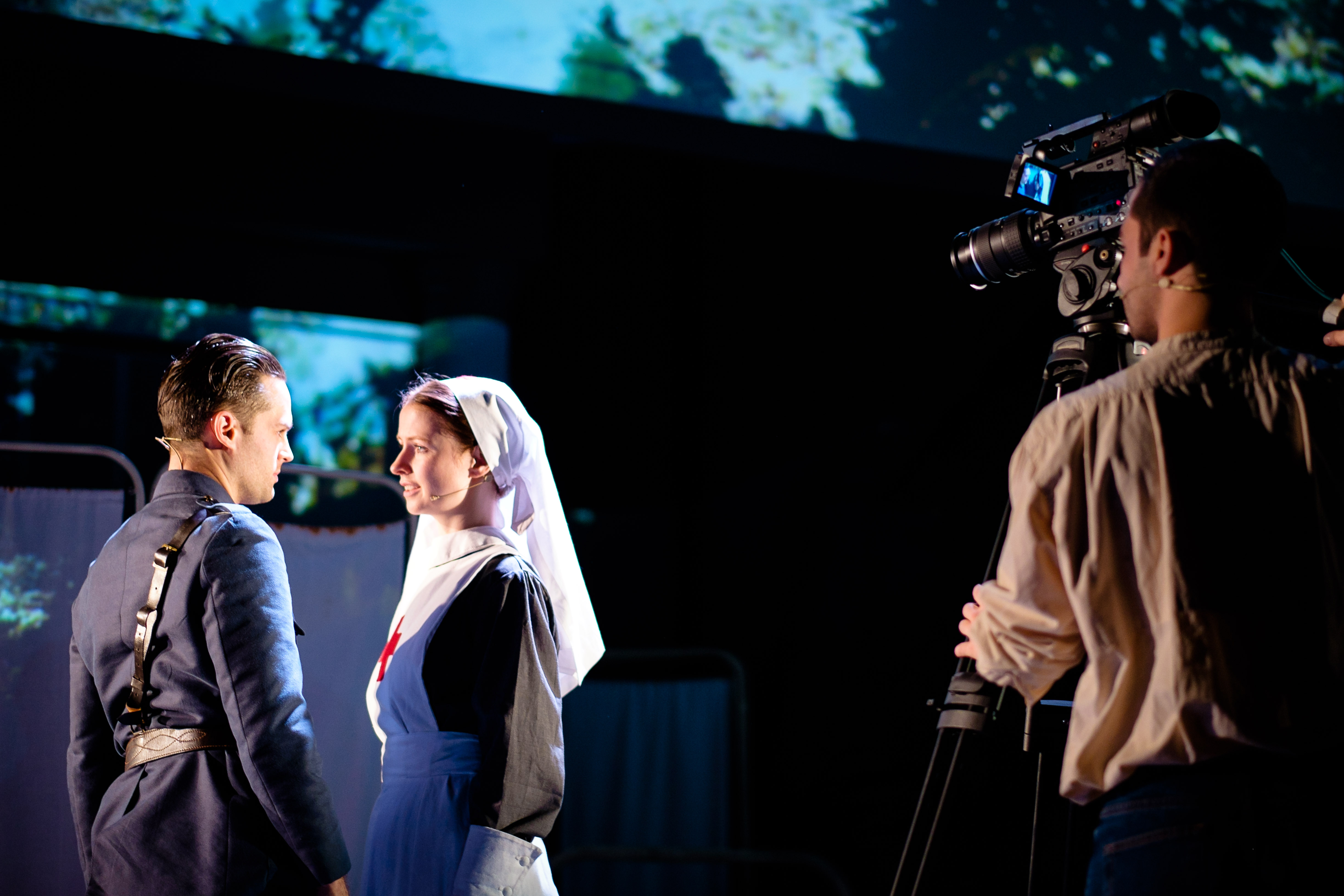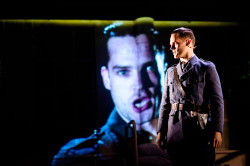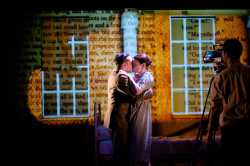Rich Jevons takes his first trip to sunny Donny’s Cast theatre for a challenging but rewarding adaptation of Ernest Hemingway’s A Farewell to Arms.
imitating the dog’s adaptation of Ernest Hemingway’s A Farewell to Arms works on a multiplicity of levels: there are the surtitles above the set, the digital cameras at its edges and feeding onto projections, and then the rather deliberately shabby set itself. This scene of a dilapidated hospital is transformed into war scenes, love scenes, action heroism and high tragedy.
Having interviewed co-director Andrew Quiick (see http://www.northernsoul.me.uk/farewell-to-arms/) I had a pretty good idea of what to expect in form – slightly less in terms of narrative content as it is at least two decades since I read the book or saw either of the rather unfortunate film versions.
The actual is unusual inasmuch as it is in some ways naturalistic – full of emotion and drama – but it is also mainly spoken to camera, a film within a play much as Shakespeare uses a play within a play in Hamlet. So yes, the two leads are strong performances – Jude Monk McGowan as Frederic Henry and Laura Atherton as Catherine Barkley – but not in a classical sense. They more focus us on the very writing of the dialogue, as Brechtian analysts would have it, ‘acting in quotation marks’.
So their love blossoms against a background of war and it is setting the scene of the war itself that takes up much of the first half of the show. Replete with surround sound for explosions and gunfire that make you jump out of your seat, some powerful physical acting for the wounding of Frederic and death of one of his associates.
It is in the second half that our romantic emotions are played with far more as we really feel for the couple and whilst the future looks bleak we keep on until the end with a hope for their happiness in the midst of the world falling apart.
But yes, imitating the dog’s take on the Hemingway classic leaves us in no doubt of the falsity of the American Dream and the death of innocence the Great War engendered. And the arc of the story also says much about true love too – the self-sacrifice, its endurance but its improbability.
However, you don’t leave the Cast theatre (my first visit and I’m impressed) feeling forlorn or subdued. Just more of an ache that is the pain when we think of man’s inhumanity to man and how such innocents as the romantic pair get sucked into a destructive whirlpool that has its own momentum, almost independent of their actions.
The use of a Chorus (the other four members of the cast) is effective as it switches the voice of the narrative frequently with different nuances and viewpoints. Even in the early sections in the Italian language you don’t have to simply take in the surtitles but rather let the sweep of the action (performative and projected) run by you.
You’d be hard pushed to find another company who could pull a stunt like this off and indeed it was great to see quite a few octogenarians in the audience enjoying the show as well as the younger audience – a challenging but rewarding trip for school parties, especially with its use of multimedia. It manages to make quite complex use of technology come across quite effortlessly and there are many visual moments that remain in the post-performance retina like your own sight’s equivalent to earworms.
imitating the dog succeed once more to challenge our preconceptions of theatre itself as well as the art of adaptation that they make all their own.
See http://www.imitatingthedog.co.uk/a-farewell-to-arms/ for more details and tour dates.


